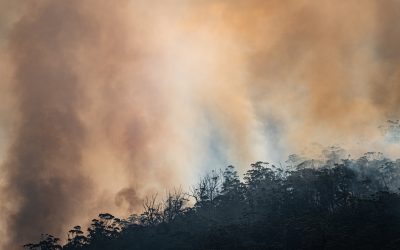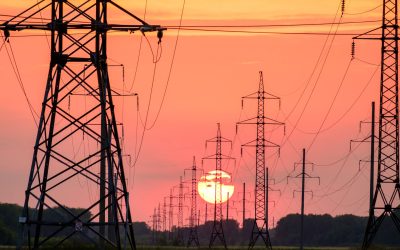The summer of 2019-20 highlighted how the Snowy Mountains region is prone to threat of bushfires during the summer months. Having a plan, being prepared and having the right protective equipment on your property is crucial to minimising the impact of an ember attack from a nearby bushfire or in the event flames encroach on your property. Regardless of whether you plan to leave early, or stay and defend your property, these tips can help you or firefighters to defend, and to reduce the risk to your neighbours and community..
General Maintenance Before Bushfire Season
- Inspect Electrical Systems: Have a qualified electrician inspect your home’s electrical system to ensure it’s in good condition and can withstand high temperatures.
- Install Surge Protectors: Power surges are common during bushfires. Surge protectors can help protect your home’s electrical system and appliances.
- Clear Area Around Electrical Infrastructure: Ensure the area around power lines, poles, and other electrical infrastructure on your property is clear of trees and debris.
- Secure Outdoor Electrical Equipment: Ensure that any outdoor electrical fixtures, such as air conditioning units or power outlets, are properly protected or covered to prevent ember intrusion.
- Prepare Your Property: Clear gutters of leaves and debris, remove flammable materials from around the house (like woodpiles and dried leaves), and trim overhanging trees and shrubs. Metal leaf guards installed over gutters prevent accumulation of flammable debris.
- Have Essential Equipment on Hand: Essential equipment includes long hoses that can reach all areas of your home and surrounds as well as strong ladder systems affixed to the home’s exterior that allow roof access for patrols and extinguishing of ember attacks. Ensure multiple high-capacity pumps with petrol- or diesel-powered backup generators can operate independently of the electrical grid, which may fail during a fire. Portable water tanks holding a minimum of 10,000 litres provide an accessible water supply as mains water often fails during fire emergencies. Personal protective equipment like fire-resistant clothing, heavy leather gloves and boots, goggles, breathing apparatus and torches should be kept easily accessible as well.
Preparing for a Bushfire
- Create Firebreaks: Clearing vegetation and creating firebreaks around your property can slow the spread of fire. While this is more a task for landscapers or property owners, electricians can advise on maintaining a safe distance from electrical infrastructure while doing so.
- Preparation of Electrical Appliances: If staying to defend your property, unplug non-essential electrical appliances to prevent damage from power surges and consider using fire-resistant covers for outdoor electrical appliances.
- Back-Up Power: If you rely on electric pumps for water, consider installing a generator or a battery backup system, as power outages are common during bushfires.
During a Bushfire Threat
- Turn Off Power and Gas: If evacuation is necessary, turn off the main power and gas supply to your home. This can prevent potential electrical fires and gas leaks.
- Use Battery-Powered Devices: Have battery-powered radios and lights ready as power may be cut off.
- Stay Informed on Electrical Safety: Keep updated on any public safety announcements regarding the electrical infrastructure affected by the bushfire.
- Erect a Barrier: Radiant heat shields made of non-combustible materials can be temporarily erected on the side of a house facing approaching fire and taken down afterwards.
- Be Ready: With flames able to move at high speeds, having firefighting gear and protective accessories ready to deploy at a moment’s notice provides you with the best chance of defending their property when threatened by a bushfire. Familiarising all family members with their use can save precious minutes when a fast-moving fire is bearing down. Taking these precautions can dramatically improve the survivability of both people and property in a bushfire emergency.
After a Bushfire
- Check Your Appliances: Inspect appliances for damage before using them post-bushfire, particularly if there has been a power surge.
- Do Not Touch Damaged Electrical Infrastructure: Stay away from damaged power lines, poles, and electrical boxes. Report them to the authorities.
- Have a Professional Check Your Home’s Electrical System: Before turning the power back on, have an electrician inspect your home for any damage to the electrical system.
General Electrical Safety Tips
- Solar Panels: If you have solar panels, be aware they can still produce electricity during daylight. If there is any damage to solar panels or associated equipment do not go near them. Have an electrician check these systems after a bushfire.
- Generators and LPG Safety: Portable generators should be used with caution, never indoors, and away from rain or wet conditions. For LPG safety, bottles should be secured in an upright position, turned off at the valve, and kept away from combustible materials.
By incorporating these safety measures and guidelines into your bushfire preparation and response plan, you can significantly reduce the risk of fire-related incidents and protect your property and loved ones.
At Sea 2 Sky, we offer comprehensive fire protection services for residential, commercial and industrial properties. Give us a call on 02 6456 1006 or submit an enquiry to discuss how we can help you with planning, installation, testing and maintenance of your fire protection equipment and systems.
Additional Resources
The NSW Rural Fire Service offers some excellent resources for preparing your home and managing bushfire risk.
The Fires Near Me page on the RFS website provides detailed information and map of bushfire locations. Even better, download the app: Available in the App Store for iPhone or Get it on Google Play for Android phone to have it in your pocket and receive alert notifications.



